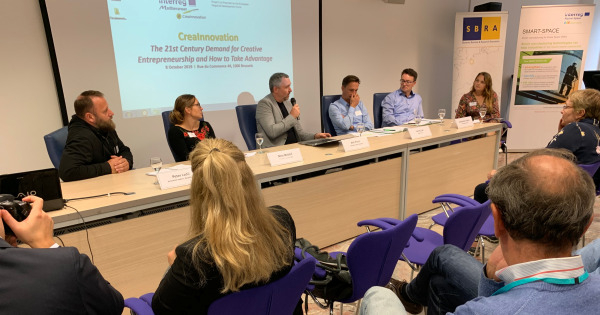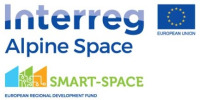How does the digital future of Europe look like?
18. 03. 2020

What are the challenges of digitalization in Europe? How can small and medium-sized companies (SME) and policymakers work together? What does it take to strengthen the exchange of innovative practices between Alpine Space regions and countries?
These are just some of the questions that have been addressed by the participants of the “Digital Europe and Future Role of DIHs/S3” conference. The event has been held in the organization of the Slovenian Business & Research Association and Technology Park Ljubljana. It took place on 8th November 2019 in Brussels.
Benefit for all citizens and companies
Žiga Bahovec of DG CNECT first explained the goals of the European digitalization incentives. “The main objective is to ensure that Europe drives the digital transformation of society and economy, bringing benefits to all citizens and businesses, « Bahovec expressed.
Among others, the EU aims to reinforce its digital capacities, lead the development of the next-generation technologies and build a world-leading connectivity infrastructure. In total, the EU has allocated 9.2 billion euros for a diverse mix of projects related to digitalization.
The rationale for these comprehensive efforts is clear. As Bahovec pointed out, digital strategic capabilities will allow the EU to compete globally, regain control over Europe’s value chains and better address Europe’s economic and societal challenges.
DIH: one-stop-shop for digital transformation
Katja Reppel, Deputy Head of Unit for Smart and Sustainable Growth DG Regional and Urban Policy, further explained the role of Digital Innovative Hubs (DIHs).
DIHs are regional multi-partner one-stop-shops that support SMEs and the public sector in their digital transformation. They provide access to the latest knowledge, expertise and technology, and support with piloting, testing and experimenting with digital innovations. DIHs also provide business and financing support to implement these innovations.
Best practices in the Alpine Space
The exchange of innovative practices, largely facilitated by the DIHs, has been especially successful between region and countries of the Alpine Space.
The Alpine Space is a European transnational cooperation program that provides a framework for cooperation between economic, social and environmental key players in seven Alpine countries.
One of the participants is TECOS – Slovenian Tool and Die Development Centre. Dr. Aleš Hančič, its managing director, explained how TECOS facilitates cooperation using DIH platforms. He said that DIHs are “a common method to help regional and national strategy-responsible institutions understand how RIS3 value-creation can be fostered”.
Other use cases and best practices have also been presented by dr. Jürgen Jähnert, CEO of Bwcon, Fiorenzo Cazzato, Regione Veneto, Esteban Pelayo, EURADA - European Association of Development Agencies and Jean-Jacques Bernerdini, Grand E-nov.

